Common Buttonbush, also known as Honeybells or Honeyballs, is a distinctive perennial Native Texas shrub that thrives in wetlands across the United States. Its unique, globe-like creamy white flowers bloom from June through September and attract many pollinators.
Known for its adaptability, Buttonbush can flourish in diverse wet environments—from riverbanks to pond edges—making it a versatile addition to water-centric sites in your landscape. I planted Buttonbush off our A/C condensation drip, which has proved, this year, to be quite successful.
The Buttonbush's versatility and visual appeal make it a compelling addition to any Texas native landscape looking to attract wildlife–birds, bees, and butterflies.
Quick Facts
- Common Names: Buttonbush, Honeybells, Honeyballs
- Latin Name: Cephalanthus occidentalis
- Family: Rubiaceae (Madder Family)
- Height: Typically 6 to 12 feet (can reach up to 18 feet)
- Bloom Time: June through September
- Light Requirements: Full sun to partial shade
- Soil Type: Prefers moist sandy loam; can tolerate up to 12 inches of standing water
- Water Needs: High; ideal for aquatic environments
Distribution – Where is Common Buttonbush Native?
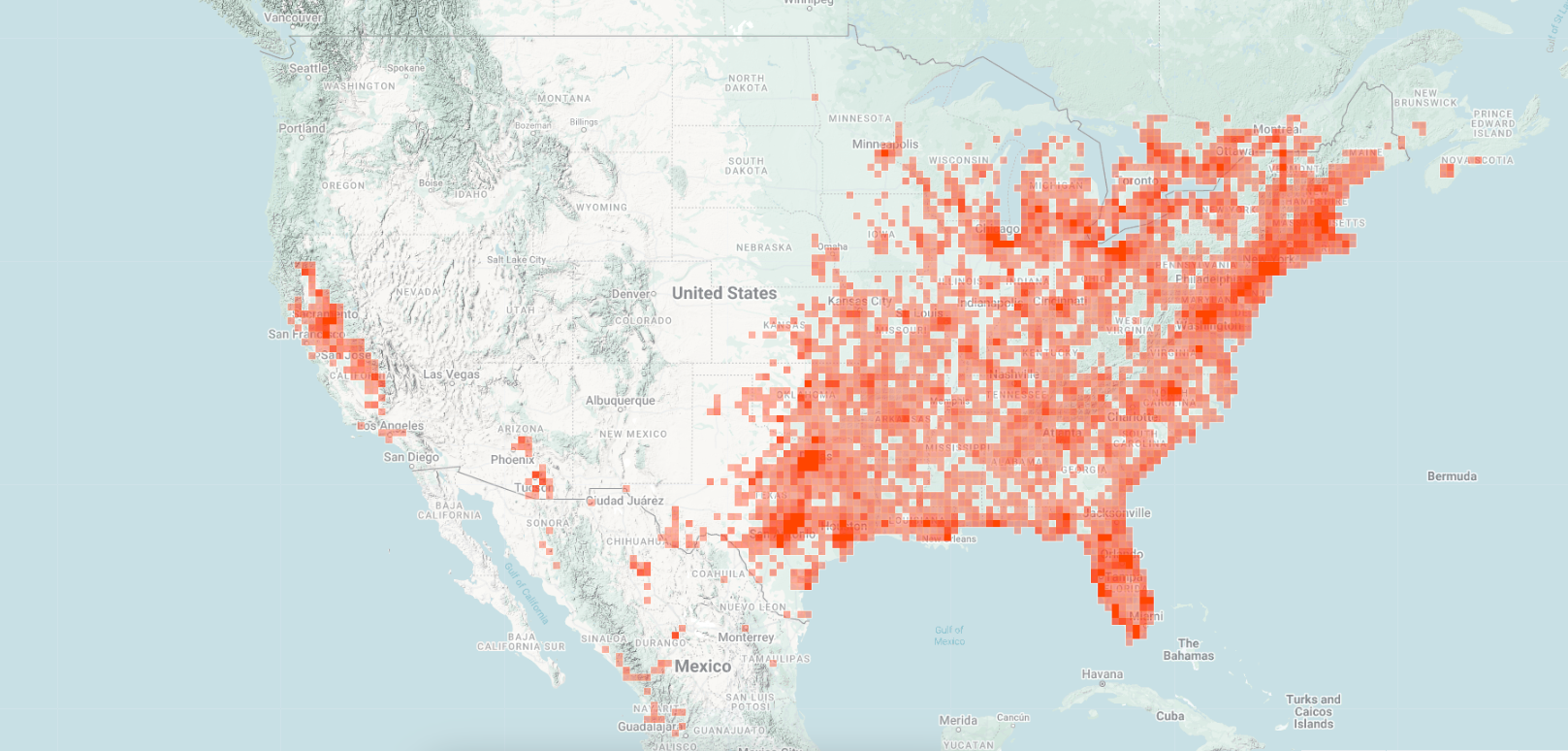
Native to a broad range of the United States, Common Buttonbush thrives from the humid marshes of Texas to the swampy regions of Florida and the waterways of California.
It prospers naturally along rivers, in wetlands, and beside ponds. Although it has a preference for moist environments, with sufficient watering, Buttonbush is remarkably adaptable and can flourish in diverse landscape settings beyond its typical aquatic habitats.
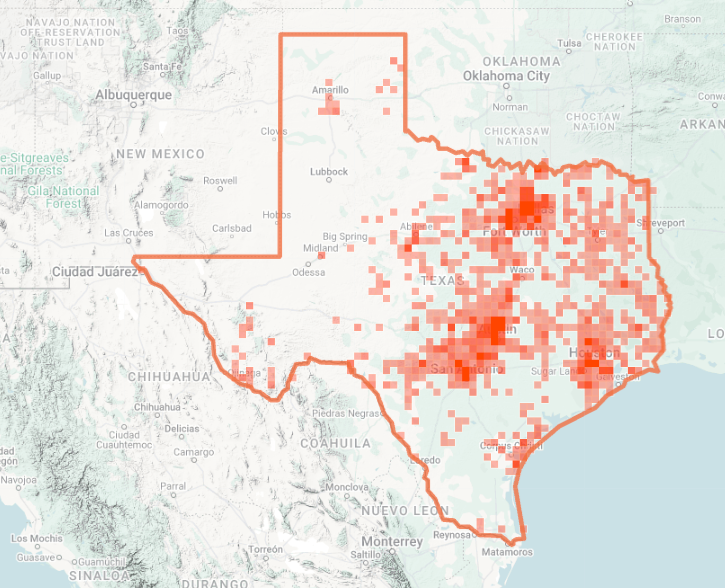
In Texas, of course, while the Buttonbush is rather common, it's most common in the state of Central Texas – Eastwards, given the quantity of precipitation and moisture the plant prefers.

Benefits of the Buttonbush
For Your Landscape
- Versatile Planting Options: Buttonbush excels in various light conditions (although that might change how it blooms), from full sun to partial shade, making it a flexible choice for different garden spots. Its preference for aquatic environments allows it to thrive in areas that are perpetually wet or moist, where other plants might not prefer it.
- Visual Interest: The unique, aromatic, spherical flowers and lush foliage of the Buttonbush add a distinctive aesthetic to any Texas native landscape, provided it's water needs are met.
- Flood Tolerance: Well-suited for flood-prone areas, Buttonbush stabilizes the soil and provides beauty and benefit even in challenging conditions, making it ideal for waterside placements or rain gardens.
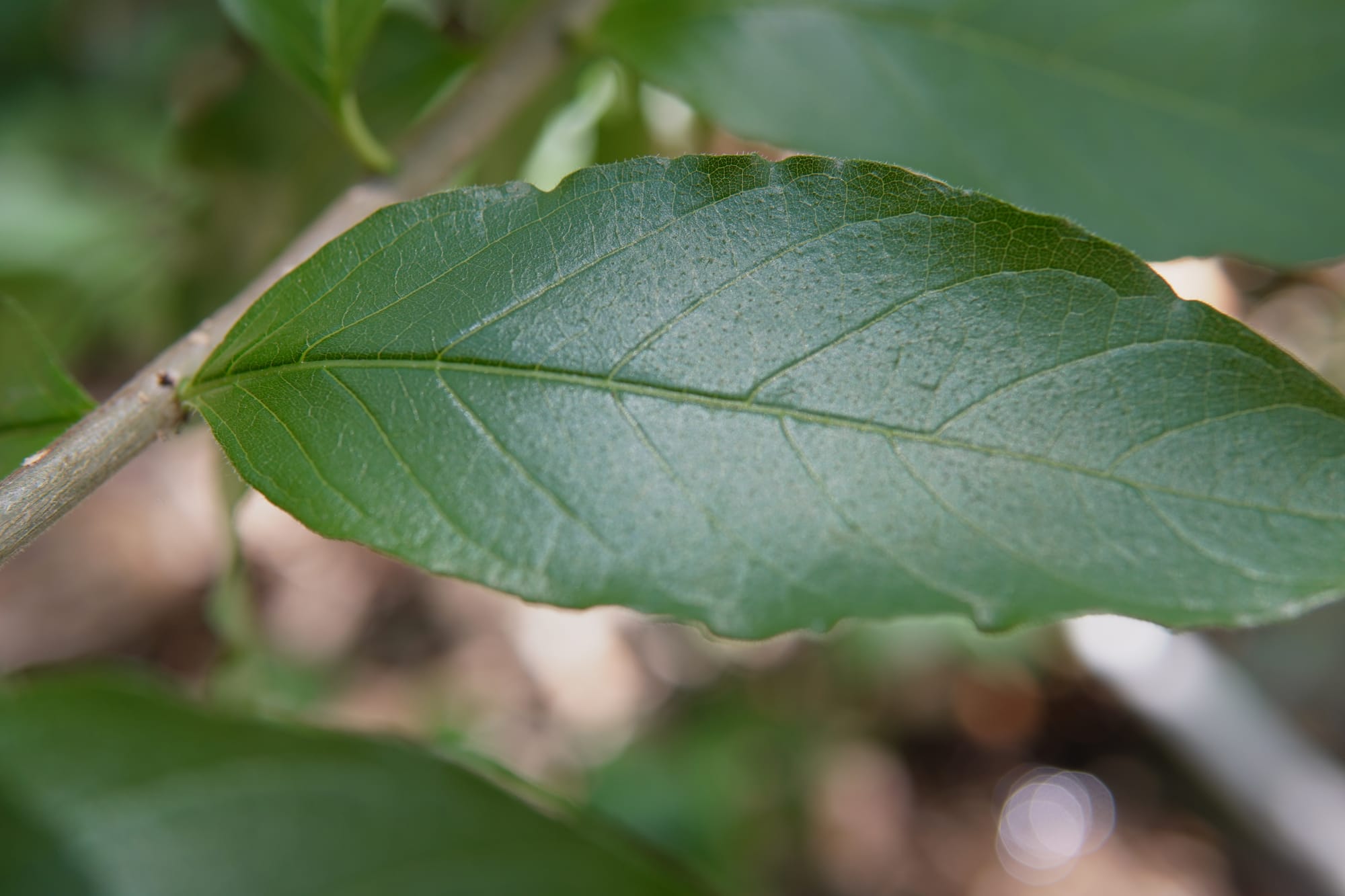
For Wildlife
- Pollinator Hub: The nectar-rich flowers of the Buttonbush draw butterflies like skippers, swallowtails, and hairstreaks, as well as bees and hummingbirds, contributing significantly to the garden’s biodiversity.
- Bird Refuge: Its nutlets, which linger into winter, provide crucial sustenance for over 25 species of birds, including waterfowl like ducks and shorebirds. Dense branches offer cozy nesting sites and shelter. The fruits are especially popular among cardinals, finches, and sparrows, making the Buttonbush a favorite stop for these birds.
- Aquatic and Wetland Enhancer: Buttonbush is a staple in wetland management, commonly planted in bioswales and rain gardens to purify water and stabilize banks. This not only supports the surrounding flora and fauna but also ensures a thriving habitat for various aquatic life.
- *Mostly Deer-Resistent: Deer might nibble on Buttonbush if they’re really pushed for food, but generally, they leave it alone if there are tastier options around. This makes it a decent pick if you’re trying to keep your garden deer-resistant, at least where better-loved deer snacks abound.
Planting & Care
Location: Where is the best place to plant Common Buttonbush?
Buttonbush is adaptable, but the key is that you can ensure it flourishes, and your maintenance (mostly supplemental watering) is kept to a minimum, to think about where it will passively receive consistent water.
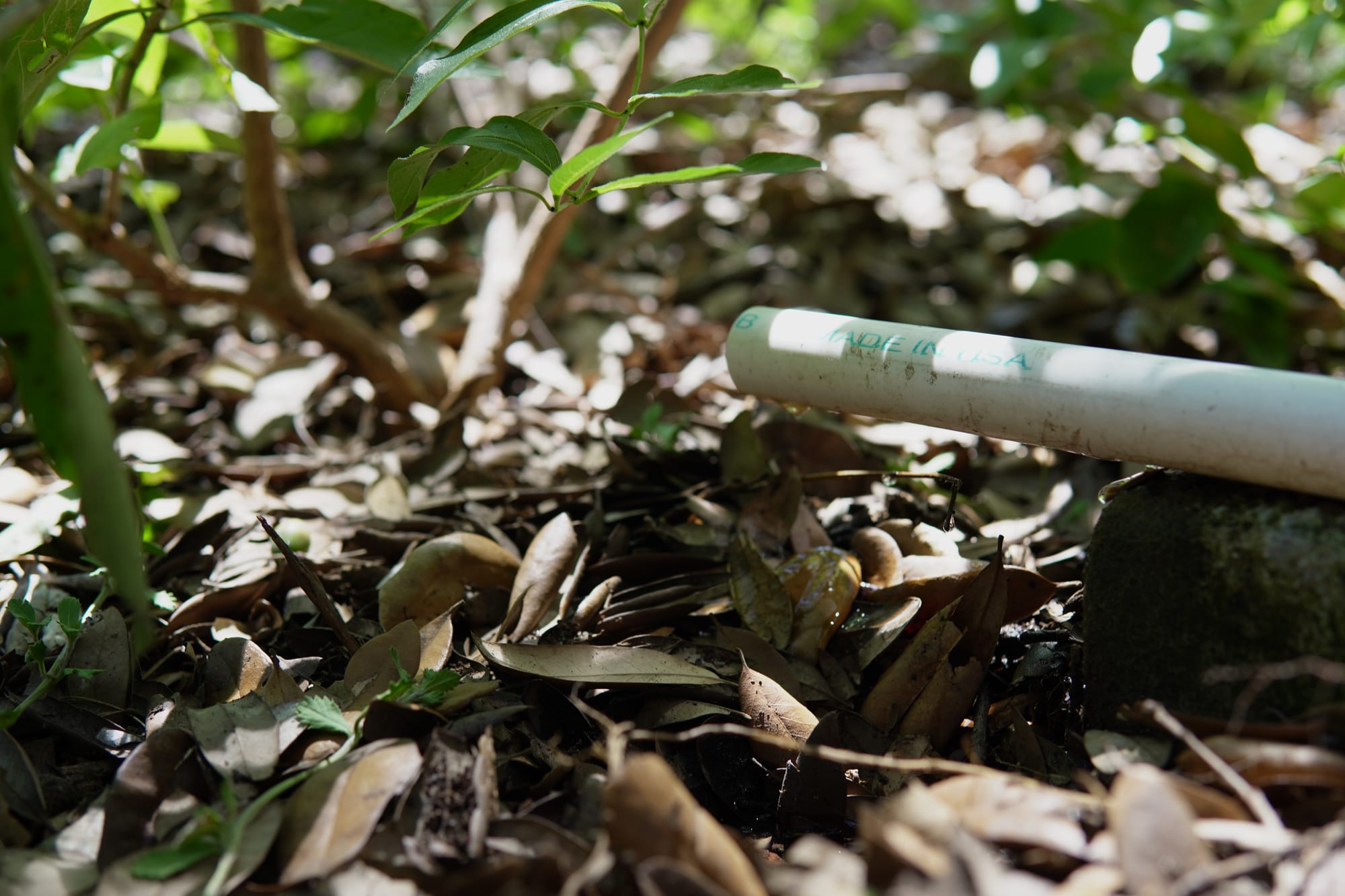
Here are my specific recommendations for planting Buttonbush in your landscape based on my experiences and research:
- Near Water Features: If you have this type of landscape (space, existing water features, etc.) planting Buttonbush around the edges of ponds, lakes, or alongside streams maximizes its natural preference for those wet environments. The proximity to water ensures the roots remain moist, which will really promote lush growth and if exposed to significant sun, abundant flowering.
- Rain Gardens: Utilize Buttonbush in rain gardens, which can help manage runoff while beautifying the area. Its tolerance for standing water and flood conditions makes it perfect for these settings.
- Low-Lying Areas: Lower areas of a property that tend to collect water or remain damp are ideal for Buttonbush. These spots often challenge other plants but are perfect for this moisture-loving shrub.
- Bioswales and Wetlands: Incorporate Buttonbush into bioswales and wetland areas where its root system can contribute to soil stabilization and water purification, where it can support these really crucial ecological areas.
- AC Condensation Runoffs: I initially planted our Buttonbush near a gutter downspout, and despite the location's moisture, the plant struggled without additional water—likely because it wasn't fully established in its first year. After moving it right off the drip line from our air conditioner, the Buttonbush thrived in its second year without needing any supplemental watering. This spot has proven ideal, leveraging the consistent drip of the AC to sustain the plant even during the heat of Texas summers.
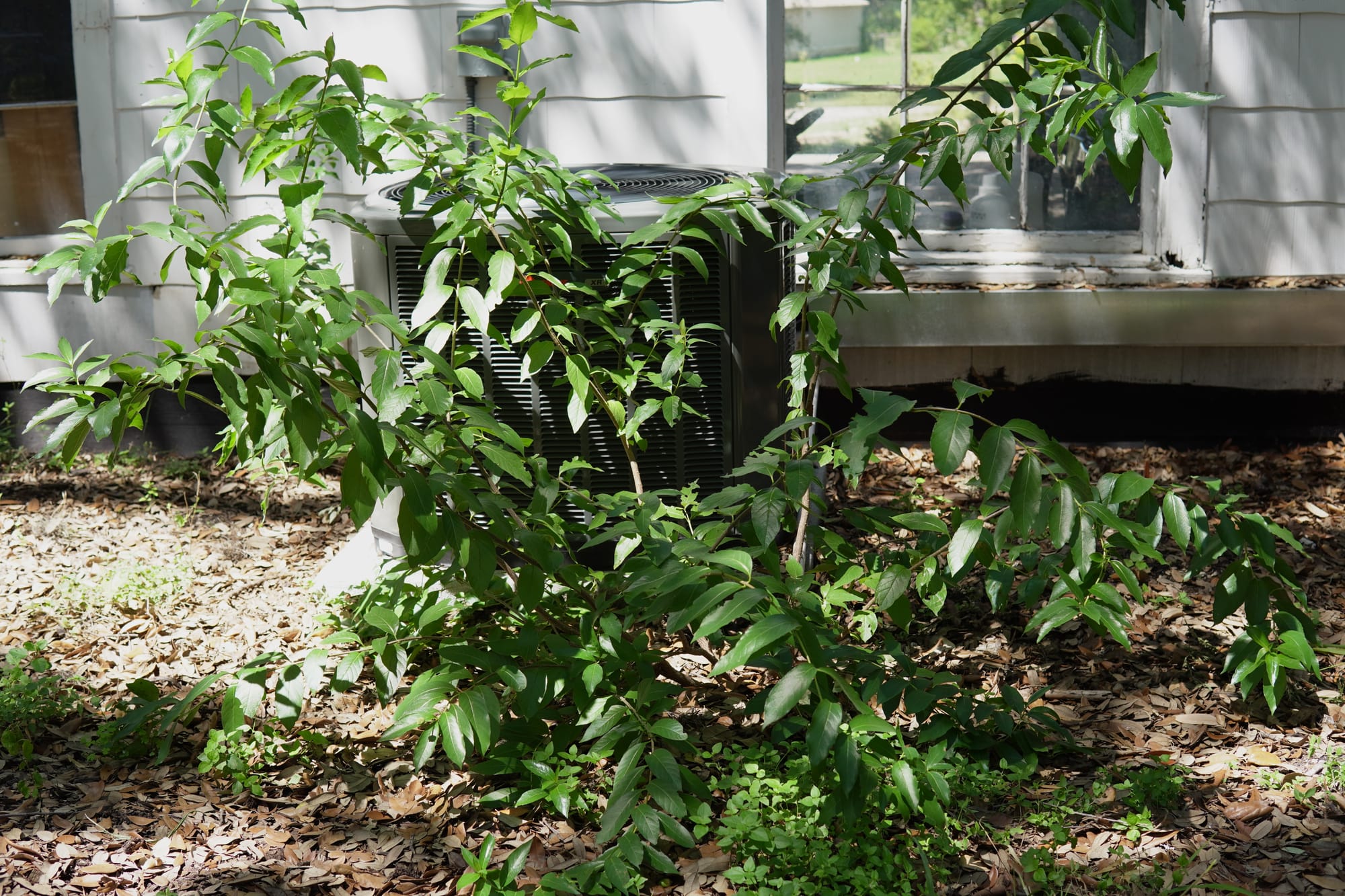
Care & Maintenance
Buttonbush requires minimal care once established in a location with suitable moisture:
- Pruning: Prune in late winter or early spring. Remove dead or damaged branches to keep the Buttonbush healthy and most vibrant. Given its size and fast pace of growth, you can shape the plant to encourage bushier growth and more blooms. Be careful not to prune after any new growth, as that will hinder the current year's blooming! If overgrown, you can undertake a more dramatic renewal pruning by removing up to one-third of the oldest stems and rejuvenating the plant the following growing season. From my experience, after substantial pruning after a challenging first year, my Buttonbush rebounded really quite well (as you can see).
- Watering: While naturally water-loving, additional watering may be necessary during extremely dry periods, especially if your Buttonbush is placed somewhere it's not receiving water consistently otherwise. Depending on where it's planted before it is established, you might need to water it occasionally, regardless.
Companion Plants
Buttonbush pairs well with other moisture-loving Texas native plants:
- Dwarf Palmetto (Sabal minor)
- Huisache (Acacia farnesiana)
- Inland Sea Oats (Chasmanthium latifolium)
Seasons: What to Expect
Spring: New growth begins as Buttonbush starts to leaf out.
Summer: Buttonbush enters its peak blooming phase from June to September, attracting an abundance of pollinators with its abundant flowers. This is when the shrub truly shines, displaying its peak ornamental value.
Fall: As the season transitions, the flowers give way to nutlets, which will continue through the winter, providing a valuable food source for birds. The foliage may begin to diminish, but the plant maintains a presence in the landscape.
Winter: As a deciduous plant, the Buttonbush loses its leaves, leaving behind the stark, yet interesting structure of its branches. Late winter is the perfect time for pruning to shape the plant and prepare it for the next growing season.
Medicinal/Edible
The Buttonbush doesn't have any known edible or medicinal value (for humans) to the best of my current knowledge and research, however, it's worth noting the leaves of Buttonbush are poisonous and don't usually tempt livestock, making it a safe ornamental choice around farms without worrying about curious nibblers.
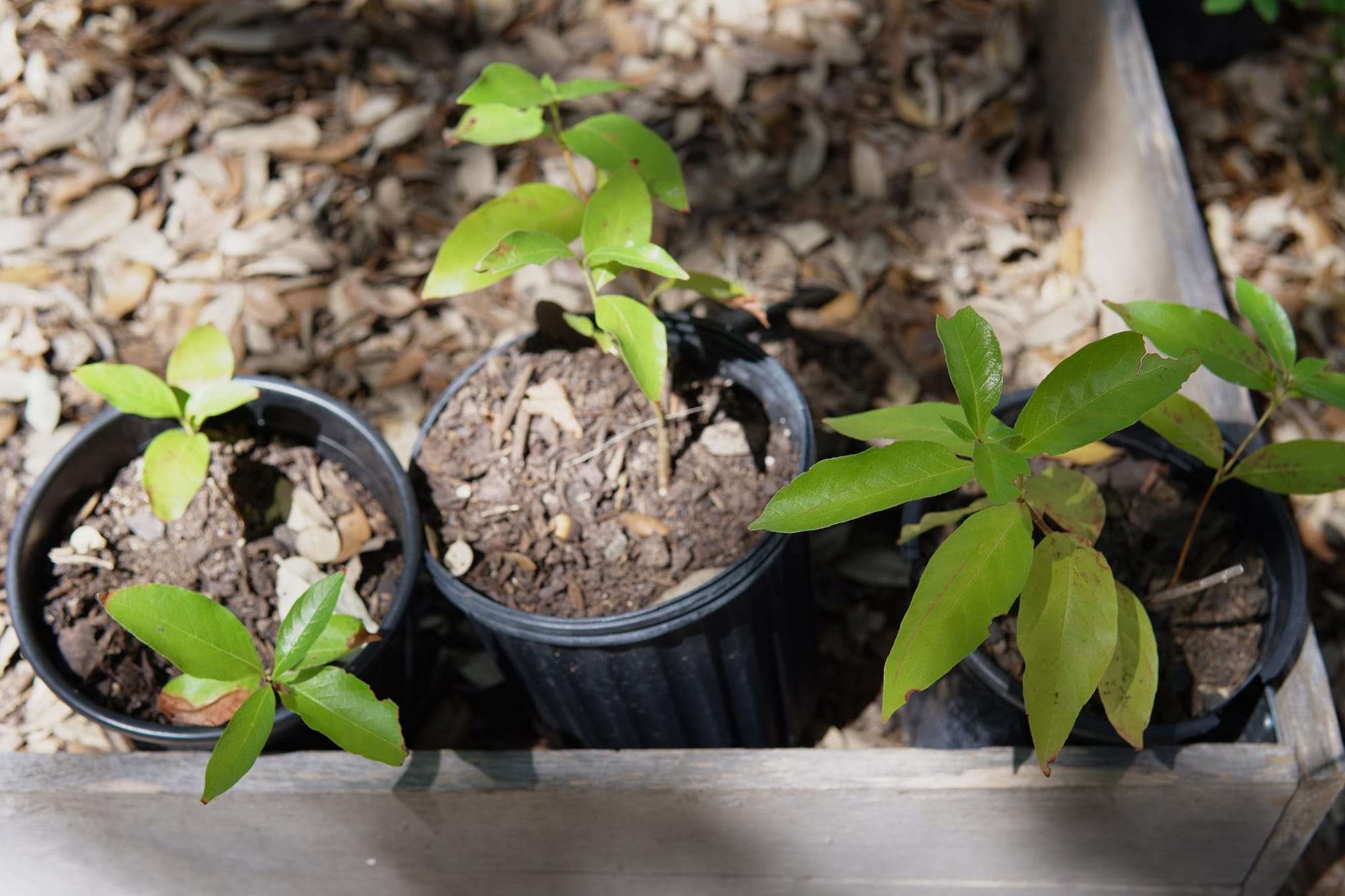
Propagation
Common Buttonbush can be propagated through several methods, each with specific considerations:
- Seeds: Collect seeds in late summer or early fall. Sow directly in a prepared area of your garden that retains moisture well.
- Cuttings: Softwood cuttings in late spring and semi-hardwood cuttings in late summer can be rooted with the aid of rooting hormone and kept moist under mist or natural rainfall. My personal attempt with semi-hardwood cuttings, largely left to nature's care, resulted in three thriving 1-gallon plants, underlining the plant's resilience.
- Transplanting: Small plants can be moved in spring, and larger clumps from mature plants can be divided. In my experience, transplanting is most successful when carried out early in the growing season, giving the plant ample time to establish in its new location. Ensure the soil is consistently moist, especially if the new location isn't naturally wet. Based on my trials, the initial year might require more attentive watering to help the plant settle, but with proper care, they quickly adapt and become self-sustaining.
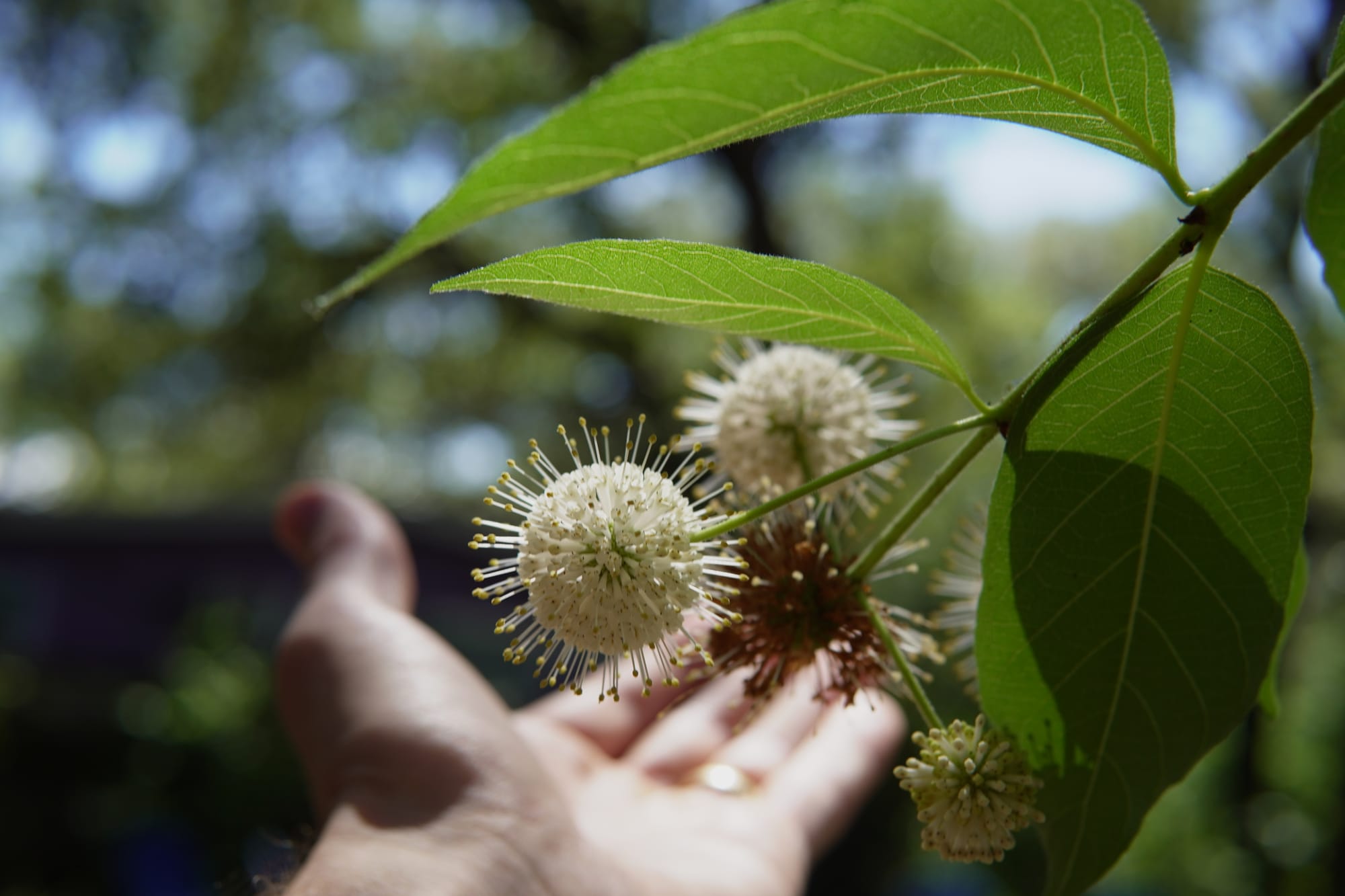
Sources
Along with my own experience working with Common Buttonbush in my landscape and observing its behavior in natural places across Texas, here are all the books and resources that I consulted in producing this page:
- How to Grow Native Plants of Texas and the Southwest by Jill Nokes
- Native & Naturalized Woody Plants of Austin & the Hill Country by Lynch
- Native Texas Plants: Landscaping Region by Region by Sally and Andy Wasowski
- Texas Wildscapes: Gardening for Wildlife by Noreen Damude & Kelly Conrad Bender
Additionally, helpful information was also derived from the following websites:

